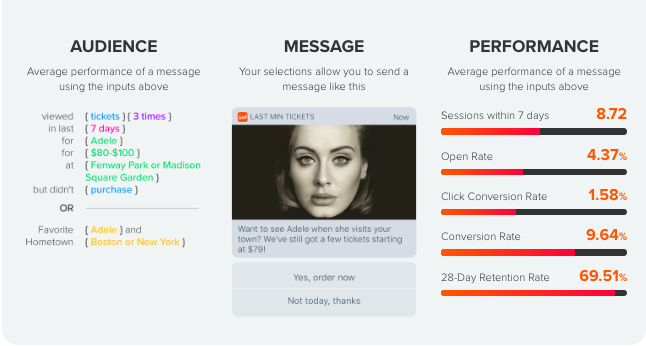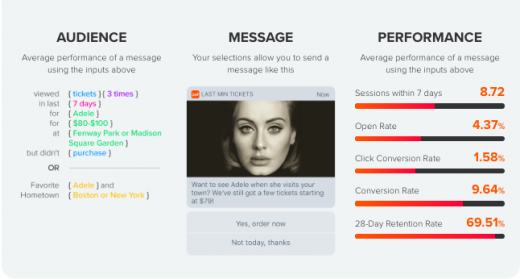Becoming a Mobile Influencer: Liquid Methodology vs. Combination Methodology
— March 7, 2019
The fact is: a lot of brands still struggle with mobile marketing, and they use quick-fix approaches to try and get better, like running a mobile app ad on instagram that generates plenty of downloads but with no real strategy to retain them.
So how does a company actually get good at mobile marketing and become a thought leader in their space? There are dozens of different approaches to this question, and a quick Google search will give you thousands of different answers.
But for now, let’s discuss a compare and contrast idea that can really help move your brand in the right direction on mobile.
Understanding the personalization formula:

For now, we want to focus on the “message” aspect of personalization.
When most marketers think of personalization, they think of being able to insert things like a recipient’s name into their message. This is done with what’s known as dynamic, or “liquid,” content – content that changes for each recipient. It can be used to not only insert a recipient’s name, but also do things like mention a specific topic of interest, determine what pictures get shown, and much more.
Dynamic content can be very effective; when you include it in a push notification, the average open rate increases by just under 9% (or a 5.7% increase over non-dynamic). However, it’s important to recognize that dynamic content alone is not enough to ensure a personalized experience.
Think about what happens when you buy a shirt and then, 48 hours later, you get a push notification to buy that shirt and it includes your name in the notification. Do you really care about your name being there, since you’ve already bought the shirt? Probably not. Instead you’re wondering why the app didn’t realize you already purchased the shirt.
This is where we need to bring in Behavioral and Profile data.
What is profile data?
Profile data is a snapshot of who a user is. Think name, age, gender, etc. Some aspects to remember:
- It’s captured using SDK or pulled from other systems (like a CRM)
- It provides a snapshot of who the user is at the current moment
- It can be harder to obtain as a user generally has to take the time to provide some of this information themselves (e.g. while creating an account)
What is behavioral data?
Behavioral data is a snapshot of what a user has done inside your app or website. Think of it as the actions a user has taken: opened app, read article, upgraded subscription, purchased product. Remember:
- Captured using SDK or Events API
- Provides information on what a user has done in the past
- Generally easier to collect as there’s no onus on the user to provide this information manually
How do you maximize the two?
You use what we call “a combination methodology.” Essentially, you move from audiences that only use profile or behavioral data to audiences that utilize both types of data.
By making use of all the data that’s available to them, brands using the combination methodology can send far more compelling and individualized messages, thanks to the granular audiences they have created.
Consider a news app that promotes their paid subscription without annoying casual readers by targeting the campaign only at customers that currently have a free subscription (profile data) and who have read at least nine articles in the last week (behavioral data).
Or, an event ticketing app that sends targeted push notification letting a user know one of their favorite artists, Adele, is coming to town. While the audience of customers interested in Adele is fairly large, yet still targeted, you get much more targeted by including users who are located in the specific city she’s performing in (profile data) and haven’t purchased tickets yet (behavioral data).

When you combine the two types of data, you get much more flexibility in ensuring the right message gets to the right person.
Business & Finance Articles on Business 2 Community
(37)


